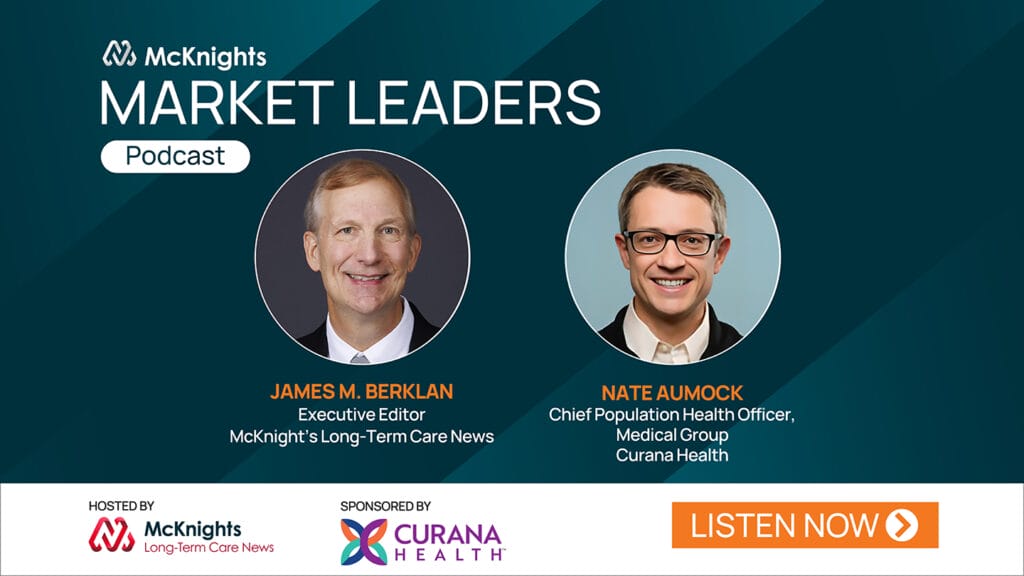Nursing home stakeholders are reacting with contempt and concern to key provisions of the newly proposed fiscal 2025 Medicare Part A pay rule.
Beyond mixed reaction for the planned 4.1% pay increase for nursing homes, the proposal raised the most eyebrows with its call to increase the rate and amount of possible civil monetary penalties. The Centers for Medicare & Medicaid Services proposal estimated Thursday that they could cumulatively take an additional $25 million a year out of operators’ accounts, starting Oct. 1.
“It is disappointing that the CMS is not only choosing, again, to use the stick rather than the carrot, but is choosing a bigger, stronger stick,” said Jodi Eyigor, Director of Nursing Home Quality Public Policy for national provider association LeadingAge. “While we agree that deficient practice must be corrected for the safety and wellbeing of residents, CMS continually chooses to take responsibility only to the point of punishment while still prohibiting surveyors from offering any guidance to correct deficient practice when they see it.”
Eyigor told McKnight’s Long-Term Care News that the enhanced authority to levy fines may improperly motivate surveyors.
“By expanding this enforcement authority, CMS and the administration communicate to surveyors an expectation to impose even more financial penalties and to penalize providers for deficient practices that the surveyors themselves failed to identify in past surveys,” Eyigor observed. “The administration claims that they want to protect the health and safety of America’s nursing home residents. We’ll know that’s true when they finally take steps to actively engage in quality improvement in a productive way.”
Veteran consultant Maureen McCarthy (pictured) also is worried about the pressure that the expanded CMP policy could exert on surveyors.
“Looking at those changes for CMPs on a per-instance and per-day basis in the same survey, I think [regulators’] perspective is it’s supposed to hasten the fixes,” she said. “The way I see it is they’re going to rush and not really look at determining what the root-cause analysis is for the problem. They’re going to rush to get it fixed, and it’s going to be more difficult to sustain if you didn’t truly get the root-cause analysis and a full QAPI review.”
As a result, more emphasis will be placed on QAPI programs, believes McCarthy, the president and CEO of Celtic Consulting.
“Sometimes, what you think is the reason it happened is really just a contributing factor and you don’t get down to whatever that root cause is. If nothing else, I think it’s going to push a little bit more focus and spotlight on QAPI programs,” she said.
Hits and misses
Of the four QRP measures mentioned in the rule, McCarthy said the aspect that “kind of scares me” is the agency’s use of “validating data” to be in place by fiscal 2027.
“They’re looking at MDS review for the QRP data,” she noted. “I know when that happened for staffing, there was sometimes a disconnect between what was reported in the building and what was recorded in [payroll-based journal reporting]. So I don’t know if that will come about that the process will have a separate entity or if that will be done during survey, like some of the other items have been.”
LeadingAge’s Eyigor said her group agreed with one part of the CMP language.
“CMS proposes to allow a per-day CMP for ongoing noncompliance to be imposed beginning with the start of survey. We support this allowance, particularly in light of the significant backlogs in standard surveys that persist in many states,” she explained. “However, we urge CMS to finalize this provision as a requirement — ‘shall impose’ rather than a suggestion, ‘may impose.’”
The CMP language that noted CMS’ intent to better motivate providers on areas cited for improvement was the toughest to swallow for Amy Stewart, the chief nursing officer for the American Association of Post-Acute Care Nursing.
“The majority of the facilities are motivated to correct their non-compliance because it affects their facility’s reputation, their ability to attract staff, and their ability to attract census. It affects so many things,” she said. “You can’t penalize the masses for the few who are really not doing the right thing. There are a few homes that may have spiraled and are struggling to get controlled, but even those homes are trying to fix your non-compliance. It’s hard to fix your non-compliance when you’re also paying like crazy for civil monetary penalties.”
Now for some of the good
Close observers found several positive aspects within the 211-page proposal. Among them are the rebasing of the cost year from pre-pandemic 2018 to 2022; requests for input or help from outside CMS; an updated wage index; and PDPM code mappings. CMS issued a fact sheet with details of the pay rule Thursday.
“We are … glad to see CMS’s efforts to align program policies, such as seeking consistency between SNF QRP and VBP validation processes,” Eyigor said.
McCarthy said the rebasing to 2022 rates is a needed move because it will better capture expenses and how they’ve changed since COVID.
“We all know they increased, no matter whether you’re buying a gallon of milk or hiring a nurse,” she said.
Adding inquiries into a patient’s transportation status and capabilities is a “fantastic” idea, she added.
Stewart said the items CMS wants to add to the MDS pertaining to social determinants of health are “very positive.” They’ll be helpful in care planning and better preparing a resident for transition to the community, she explained.
“Even though this will lengthen the MDS, the social determinants of health items are going to add value. I really think they will,” she said. “It will help ensure that the people have identified what they need, so I’m full steam ahead in favor of that.”




